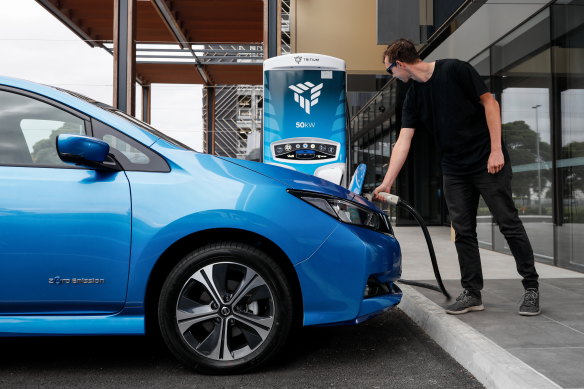
“They all come with three year roadside assistance extendable up to five years for the term, but generally, we’ve found a majority of people (after that three years) they get to a point when they look at trading up from there.”

2021 Nissan LEAF e+ Australia Electric vehicle and charging infrastructure.
Anthony Broese van Groenou, co-founder of second-hand electric retailer The Good Car Company, said he had already seen an influx of cars previously used by ride-share companies.
He said the uptake by ride-share drivers had helped with “myth busting” issues like affordability and durability of electric vehicles, saying beyond “general wear and tear”, used electric vehicles “with a couple of hundred thousand” kilometres could “still perform really well”.
In September 2020, Uber committed to eliminating tailpipe emissions by 2040. It has since halved service fees for drivers using electric vehicles until mid-2025, launched Uber Green, under which riders in major cities can choose to ride in a hybrid or electric car at no extra cost, and made a deal with BP to offer discounted electric vehicle charging. In October last year, it announced a partnership with Chinese electric carmaker BYD to import 10,000 vehicles to offer to drivers, with leases from $269 a week, leading to outright ownership after four years.
Loading
Foley said the new, second-hand offer was not subsidised, and was “complementary” to the existing BYD offer.
In the first quarter of 2024, more than 4000 electric vehicle drivers were on the Australian platform, while 4 per cent of the total kilometres covered by Uber were driven in one. Foley said the company would like to see those numbers “in the double digits of kilometres very soon”, but said there was no fixed timeline for the rollout of the program to other cities.
She said charging infrastructure remained the other major obstacle.
“Better charging infrastructure all round, better charging infrastructure in the parts of the cities where our ride-share drivers live, which may not be as well serviced at the moment.”









 Add Category
Add Category